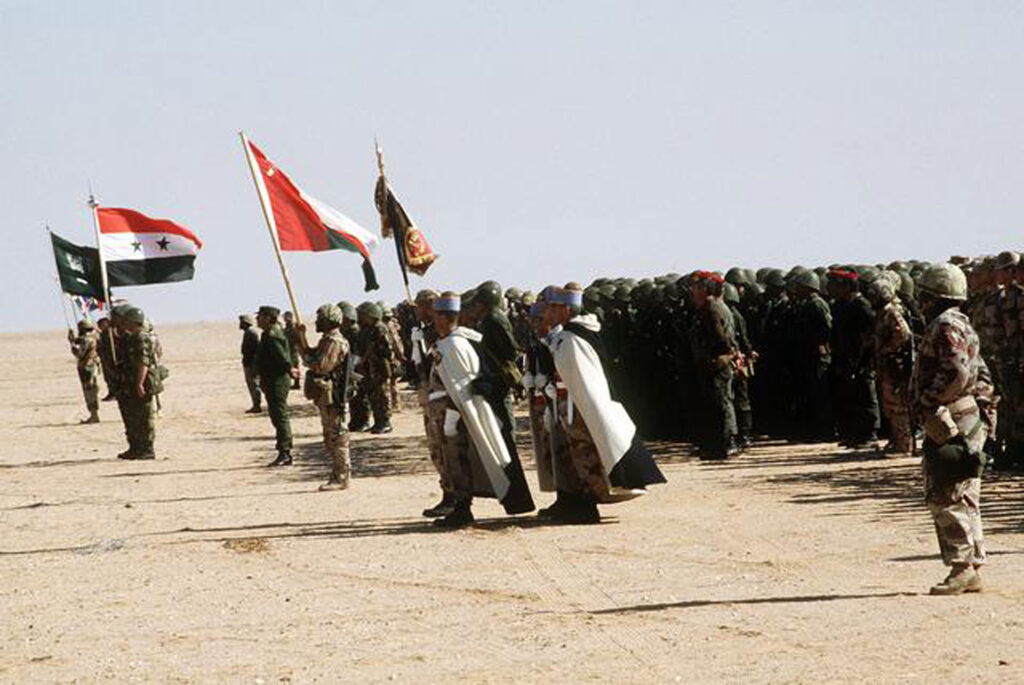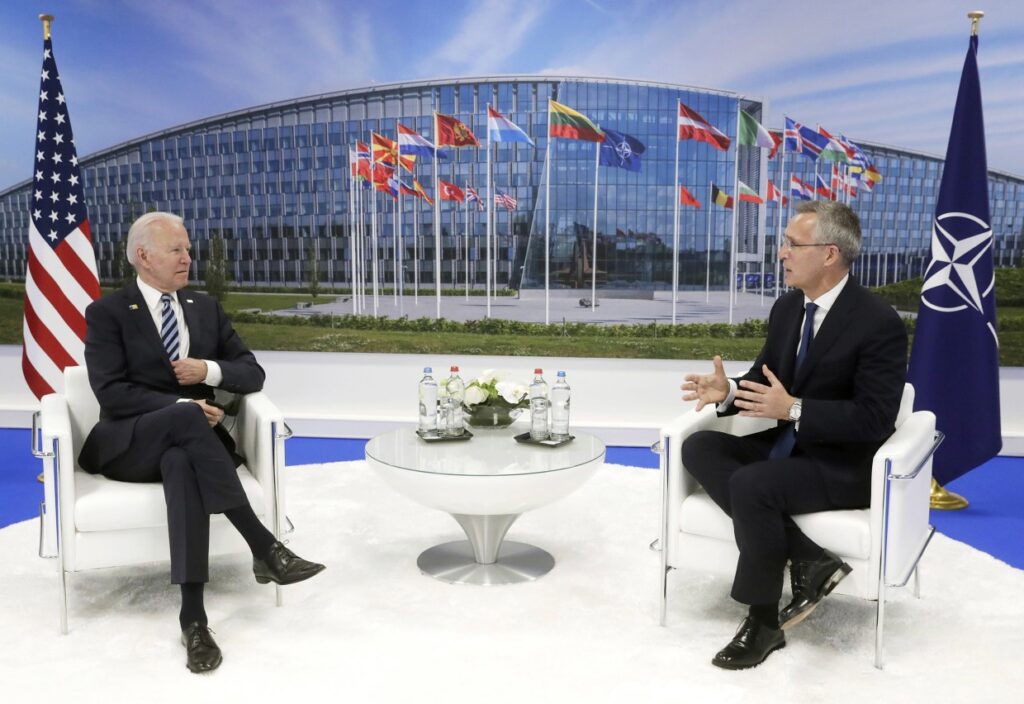“The central conservative truth is that it is culture, not politics, that determines the success of a society. The central liberal truth is that politics can change a culture and save it from itself.”
– Daniel Patrick Moynihan, U.S. Senator

The Middle East since 1948 remains a hotbed for conflict involving Arab armies. With a few rare exceptions and some exceptional non-state actors, Arab armed forces generally returned a dismal record despite in most instances possessing superior numbers and equipment. In the 1967 Arab-Israeli War, the Arab coalition threatening Israel had every material advantage. The combined Arab force would deploy roughly twice as many troops, tanks, armored personnel carriers, and artillery pieces as the Israel Defense Force (IDF). Yet, despite the significant Arab advantage, Israeli forces defeated the Arab coalition in only six days, inflicting heavy casualties in terms of both men and equipment. Saddam Hussein’s 1980 invasion of Iran demonstrates another example. In that instance, the Iraqi leader sought to take advantage of the political turmoil in Iran following the Islamic Revolution. Instead of a quick victory, Hussein’s materially superior army remained in a quagmire for nearly a decade before settling for a return to status quo ante.
Exposing Arab Philosophy
Kenneth Pollack’s Armies of Sand is a historical analysis of the reasons that frame the persistent failures of the various Arab armies across the decades. By Pollack’s reckoning, four theories explain the bleak performance of the Arab armies from past to present: employment of Soviet doctrine; politicization i.e., skewed or inverted civil-military relations; socio-economic underdevelopment; and Arabic cultural patterns and predilections. In the first instance, Pollack makes a convincing argument that Soviet Doctrine was not the problem. Robert Leonhard echoes this in his book, The Art of Maneuver. They argue this negative stereotype arose from specific failures of Soviet-backed forces in various parts of the world. The lackluster performances of Soviet clients, and later by the withdrawal of the Red Army itself from Afghanistan, splintered the credibility of the Soviet way of war. Both authors contend however, that the Red Army’s operational doctrine, typically portrayed as being highly rigid and dependent on massing of firepower, is maneuver-based at an operational level despite its command-push orientation. Pollack and Leonard see it differently. Pollack cites the performance of the Cubans against South Africa in the Angolan Civil War and the initial success of North Korean forces against the United Nations in South Korea. Pollack also points out it was the Red Army juggernaut that steamrolled the Wehrmacht in the Second World War, the forge in which Soviet doctrine was battle-tested and refined. Seeking further explanation, Pollack and Leonhard argue the inflexible and extreme application of Soviet philosophy is to blame for these failures rather than the doctrine itself. Interpreted in this manner, such application went against what the Soviets themselves promoted. One of the more egregious examples cited by Pollack is the Soviet doctrine of emphasizing ground-controlled interception in air operations: In the 1982 Lebanon War, bereft of ground radar and communications, Syrian pilots flying MiGs flew into combat mindlessly, making little or no effort to maneuver in dogfights with the Israelis. Eighty-six of those MiGs failed to return home with zero losses for the Israelis.
Inherent Imbalance
Professional, western-style militaries are expensive and, in theory, must be relatively free of politics in order to provide and implement the best military advice to their civilian leaders. Although both politicization and socio-economic underdevelopment have long been a bugbear for many non-western and less-industrialized countries, Pollack argues neither factor fully explains the inability of Arab armies to field a professional armed force capable of sustained operations against an external foe. Consider again North Korea in 1950, which possessed a highly-politicized army and was underdeveloped at its point of engagement. The initial successes of North Korea’s Soviet-equipped and trained army in the early stages of the Korean War present an exception disproving this theory. So do the Cubans, who finally forced the retreat of the South African Defense Forces across the border during the Angolan Civil War. This persuasive counter-argument illustrates that politicization and underdevelopment may not fully explain the poor performance of Arab armies which are arguably politicized and economically disadvantaged.
Reduced to the remaining claim of Arabic culture as the linchpin of Arab militaries, Pollack devotes approximately forty percent of his book to examining the impact of culture on Arab society. Despite this, Pollack is understandably careful when asserting cultural reasons for noted shortcomings. If interpreted incorrectly, this type of assertion can lead to stereotyping, which could in turn result in blind ethnocentrism. He writes:
“It is critical to bear in mind that culture is least useful in understanding the behavior of an individual, and appears most readily in the behavior of large groups over time…Conversely, the collective actions of smaller groups, let alone individuals, are more likely to be shaped by idiosyncratic factors.”
Fundamental Reform?
Seeking objectivity, Pollack employs the “Delphi” method; a process used to arrive at a group opinion by surveying a panel of experts. This method circumvents his own experiences in order to arrive at an “objective” consensus of what he terms the “dominant Arabic culture” that spans the Middle East and North Africa. He further describes that culture’s dominant traits within Arab family life, their impact on the method of education and management of civilian organizations, and on the general state of Arab military training and practices. One of those traits is the manipulation of information to avert shame. Pollack argues this sort of face-saving behavior is practiced in Arab societies out of fear of dishonor, to preserve group loyalty, and to gently “correct” behavior. While face-saving may play an important role in family life, it is problematic in military contexts as the Egyptian high command discovered in the aftermath of the 1967 Six-Day War. In that instance, Egyptian commanders facing adverse outcomes or total collapse passed censored, redacted, or fabricated battlefield reports up the chain of command with catastrophic results. Pollack, however, does not believe this behavior is or was rooted in Islam. Instead, he frames it as part of the dominant Arabic culture, noting that “religions are essentially products of a culture.” The historian Robert Hoyland agrees. He notes in his book, Arabia and the Arabs, that certain pre-Islamic tribal practices – stoning of thieves for example – later became part of the juridical and cultural fabric of some Arab countries and were later accepted or declared “Islamic.”
In conclusion, based on empirical comparison to other non-Arab countries and armies, Pollack’s counter-arguments for non-cultural explanations present a strong footing; thus giving greater credence to cultural theories as reasonable grounds for consideration. He convincingly conveys that the inflexible and unthinking practice of Soviet doctrine, regular politicization of the Arab armed forces, and socio-economic underdevelopment did indeed hinder many Arab armies in the field. Yet even in combination, those reasons could not possibly explain the underwhelming performance of Arab armies over time. Regarding the dominant Arabic culture, brilliant set-piece offensive operations – like Egypt’s in the 1973 October War – display its strengths; as do tenacious, courageous static defenses like the Iraqi Republican Guards in the 1991 Gulf War. Arab rulers and generals can field a relatively small number of so-called “elite” troops but are judged by Pollack as constrained by the dominant Arab culture from fielding a more significant number of the same quality from the general population. By the Darwinian process of incessant warfare, Arab leaders have learned to emphasize the strengths of their armies rather than demand blood from stone as in the past.

Teoh Jit Khiam works in private practice. He writes on topics concerning Asian politics and history. He has written several pieces for The Affiliate Network including The Malay Annals: History Describes the Present.










 Travis Johnson is an active duty US Marine pursuing a MA degree in intelligence studies and is the associate editor for
Travis Johnson is an active duty US Marine pursuing a MA degree in intelligence studies and is the associate editor for 

 Travis Johnson is an active duty US Marine pursuing a MA degree in intelligence studies and is the associate editor for
Travis Johnson is an active duty US Marine pursuing a MA degree in intelligence studies and is the associate editor for 